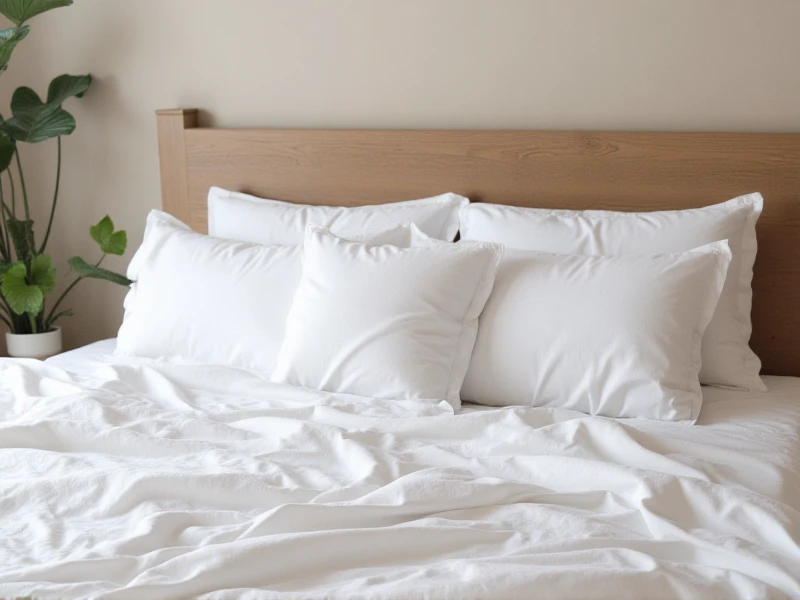Are You Sleeping on an Old Pillowcase? Discover the Secrets to Restful Nights
2025-05-31

Okay, here is an SEO-optimized article focusing on "pillowcases," crafted to sound natural and informative, avoiding AI telltales.
We spend roughly one-third of our lives sleeping. While much attention is paid to choosing the perfect mattress or the ideal pillow, a crucial element often gets overlooked: the humble pillowcase. Far more than just a decorative layer for your pillow, your pillowcase plays a significant role in your sleep quality, skin health, and even allergy management. Choosing the right pillowcases and caring for them properly can transform your nighttime routine.
The Silently Powerful Sleep Accessory
Think about it. Your face and hair spend hours pressed against this fabric every single night. It absorbs oils, sweat, dead skin cells, and hair products. Beyond hygiene, the texture and material directly contact your skin and influence how comfortably your head rests. An old, rough pillowcase can tug at hair and skin, leading to friction-related issues, while a cool, smooth one can feel utterly luxurious. This intimate nightly contact makes selecting the perfect pillowcase an essential part of your sleep hygiene ritual.
Understanding Pillowcase Materials: Finding Your Bliss
The feel and function of pillowcases vary dramatically based on their fabric:
1. Cotton: The classic choice. Known for breathability, durability, and ease of care. Percale cotton offers a crisp, cool feel ideal for warm sleepers. Sateen cotton has a silky smooth sheen and softer drape. Look for long-staple cotton (like Egyptian or Pima) for superior softness and longevity. Best for versatility, breathability, low maintenance.
2. Linen: Prized for its incredible breathability and temperature regulation. Linen pillowcases become softer and more absorbent with each wash. They have a distinct, slightly textured feel and a relaxed, rumpled aesthetic. Best for hot sleepers, moisture-wicking, durability, unique texture lovers.
3. Silk (or Mulberry Silk): The pinnacle of smoothness and luxury. Silk pillowcases are hypoallergenic, incredibly gentle on hair and skin (reducing friction and potential creases), and naturally temperature-regulating. Their smooth surface also tends to absorb less moisture from skin and hair than cotton. Best for minimizing hair breakage and friction, reducing skin irritation, luxurious feel.
4. Satin (Often Polyester): Offers a similar smooth feel to silk but is typically less expensive and less breathable. While it can reduce friction on hair, synthetic satin might trap heat for some users. Be mindful of the thread count; very cheap satin can snag easily. Best for silk-like feel on a budget, reduced friction.
5. Bamboo-Derived Rayon (Often Called Bamboo): Known for being incredibly soft, silky, breathable, and naturally hypoallergenic. Bamboo fabrics often have good moisture-wicking properties and thermal regulation. Best for softness, eco-consciousness (check sourcing), hypoallergenic needs, moisture management.
Beyond Material: Key Features to Consider
Thread Count: Often debated! While higher thread counts generally indicate a denser, potentially smoother fabric, quality of fiber and weave are more important. For cotton, 300-500 TC is often a sweet spot. Be wary of inflated numbers lacking quality.
Weave: Percale (crisp), sateen (silky), twill (diagonal pattern) – each provides a different feel and draping effect.
Closure: Envelope closures keep pillows securely tucked inside (neat look, less slipping). Zippers offer the most secure closure but potentially have harder parts. Traditional open ends might require more frequent tucking in.
Deep Pockets: Essential for thicker pillows (memory foam, down) to prevent the pillow from popping out.
Why Your Pillowcase Hygiene is Non-Negotiable
Regular washing isn't just about keeping things smelling fresh:
Skin Health: Dirty pillowcases harbor bacteria, oils, and dead skin cells. This can clog pores, exacerbate acne, and lead to irritation.
Allergy Control: Dust mites thrive in bedding environments. Frequent washing (hot water is best if material allows) drastically reduces allergens like dust mites and pet dander trapped in the fabric.
Longevity of Pillows: Dirty pillowcases transfer grime to your pillows themselves, making them harder to clean effectively and shortening their lifespan.
Aim to wash your pillowcases at least once a week. If you have sensitive skin, oily hair, allergies, or night sweats, twice a week might be better.
Choosing Pillowcases for Your Needs: A Quick Guide
Skin Concerns (Acne, Sensitive Skin): Prioritize breathable natural fibers (100% cotton, linen, silk) and wash very frequently (2-3 times a week). Silk is particularly recommended for reducing friction on sensitive skin. Avoid harsh detergents or fabric softeners.
Hair Protection (Frizz, Breakage, Curly Hair): Smooth, low-friction fabrics like silk, quality satin, or bamboo rayon are winners. They reduce tangling and absorb less moisture from hair overnight.
Hot Sleepers: Opt for breathable, moisture-wicking materials like linen, percale cotton, or bamboo rayon. Avoid tight synthetic weaves.
Cool Sleepers (or Year-Round Comfort): Flannel cotton or sateen offer a warmer, cozier feel.
Durability & Ease of Care: Good quality cotton percale or sateen are workhorses and generally easy to launder.
The Luxury Experience: Mulberry silk provides unparalleled smoothness and indulgence.
The Upgrade Your Bed (and Skin!) Deserves
Don't underestimate the impact a simple change of pillowcase can make. Swapping out scratchy, outdated pillowcases for ones made from fabric suited to your needs can be a small but significant upgrade to your sleep comfort. It’s an investment in both your nightly rest and your skin's health. Whether you crave the cooling crispness of cotton percale, the natural luxury of linen, or the hair-saving smoothness of silk, the perfect pillowcase is out there waiting to cradle you into sweeter, more comfortable dreams. Take a look at your pillowcase tonight – is it still serving you well?
Category: